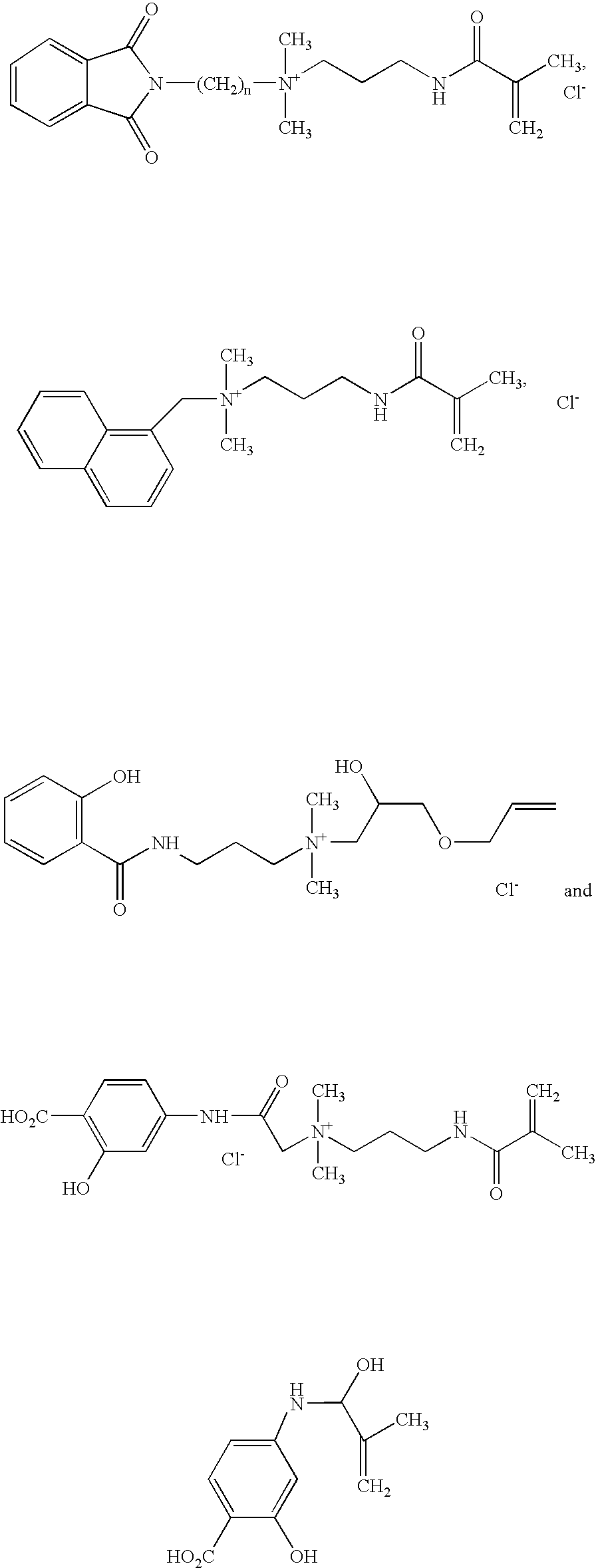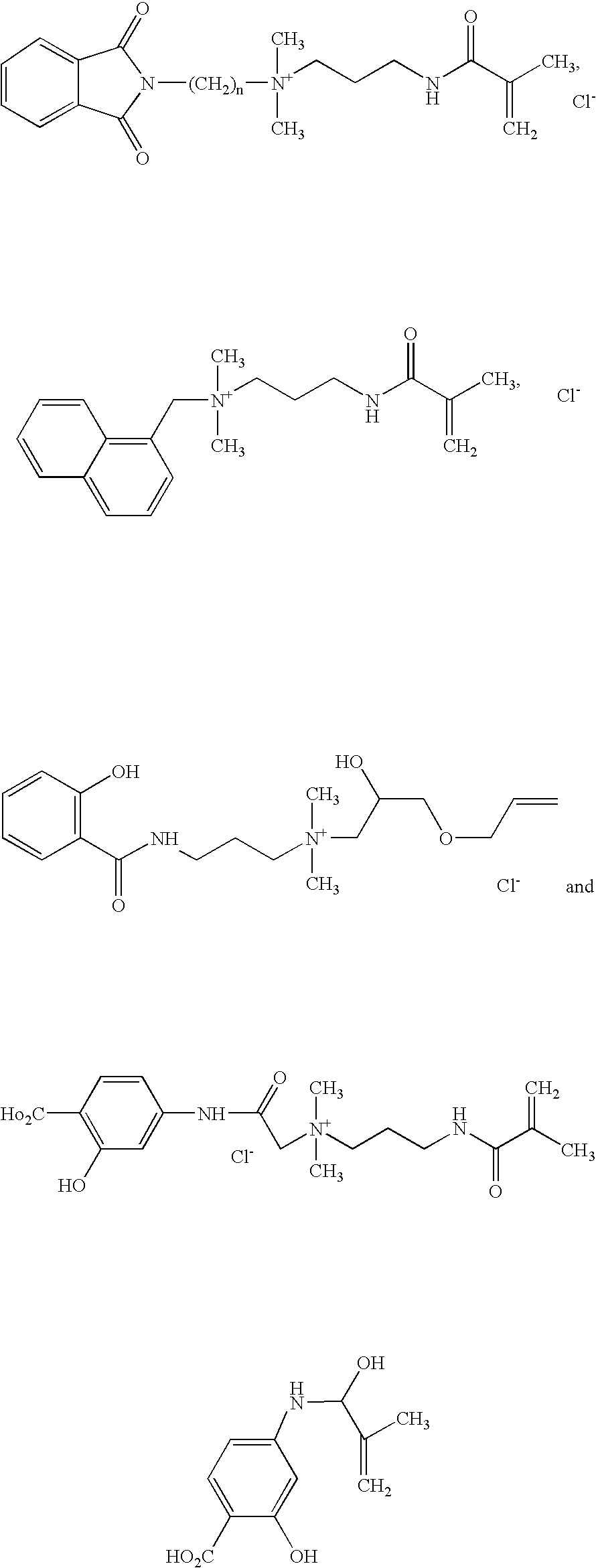Water soluble monomers and polymers for protecting substrates from ultraviolet light
a technology of ultraviolet light and polymer, applied in the direction of synthetic polymer active ingredients, hair removal, hair cosmetics, etc., can solve the problems of affecting the performance of polymer conditioning, affecting the substantivity of the polymer, and affecting the elasticity of the skin
- Summary
- Abstract
- Description
- Claims
- Application Information
AI Technical Summary
Benefits of technology
Problems solved by technology
Method used
Image
Examples
example 1
Preparation of 4-methacrylamidosalicylic acid (4-MASA)
[0102]In a 5 L flask, 4-aminosalicylic acid (250 g, Aldrich Chemical Co., Milwaukee, Wis.) is dissolved in acetone (2 L) under a nitrogen atmosphere with the aid of mechanical stirring and methacrylic anhydride (375 g, Aldrich) is added dropwise at ambient temperature over 1 hour. After stirring for 16 hours, the volume of acetone is reduced to 1.0 L by vacuum distillation. The crude solid product, which precipitates from solution, is collected by vacuum filtration. The product is washed with 500 mL of 5:1 water:methanol and then stirred for 30 minutes in 1 L of 5:1 water:methanol. The solid is isolated by vacuum filtration and air-dried overnight to yield 295 g of 4-MASA as a tan solid.
example 2
Preparation of N-[3-(dimethylamino)propyl]methacrylamide-N-(3-bromopropyl)phthalimide quaternary salt (DMAPMA.PQ).
[0103]A 500 ml flask is charged with isopropanol (200 mL), MEHQ (methylhydroquinone, 0.5 g), N-(3-bromopropyl)phthalimide (53.6 g, 0.2 mole) and DMAPMA (N-[3-(dimethylamino)propyl]methacrylamide, 37.5 g, 0.22 mole). The mixture is heated at reflux for 12 hours. The solution is then cooled down and the majority of the solvent was removed by vacuum distillation. The resulting viscous liquid is put into freezer overnight. The resulting precipitate is dried and collected to provide the title compound in near quantitative yield.
example 2a
[0104]A 1000 ml flask is charged with N-(3-bromopropyl)phthalimide, 78.2 g, 0.292 mole), DMAPMA (55.8 g, 0.324 mole), MEHQ (0.5 g) and water (511 g). The mixture is heated at reflux for 12 hours. The resulting DMAPMA.PQ is collected as an aqueous solution.
PUM
| Property | Measurement | Unit |
|---|---|---|
| Percent by mass | aaaaa | aaaaa |
| Percent by mass | aaaaa | aaaaa |
| Nanoscale particle size | aaaaa | aaaaa |
Abstract
Description
Claims
Application Information
 Login to View More
Login to View More - R&D
- Intellectual Property
- Life Sciences
- Materials
- Tech Scout
- Unparalleled Data Quality
- Higher Quality Content
- 60% Fewer Hallucinations
Browse by: Latest US Patents, China's latest patents, Technical Efficacy Thesaurus, Application Domain, Technology Topic, Popular Technical Reports.
© 2025 PatSnap. All rights reserved.Legal|Privacy policy|Modern Slavery Act Transparency Statement|Sitemap|About US| Contact US: help@patsnap.com


